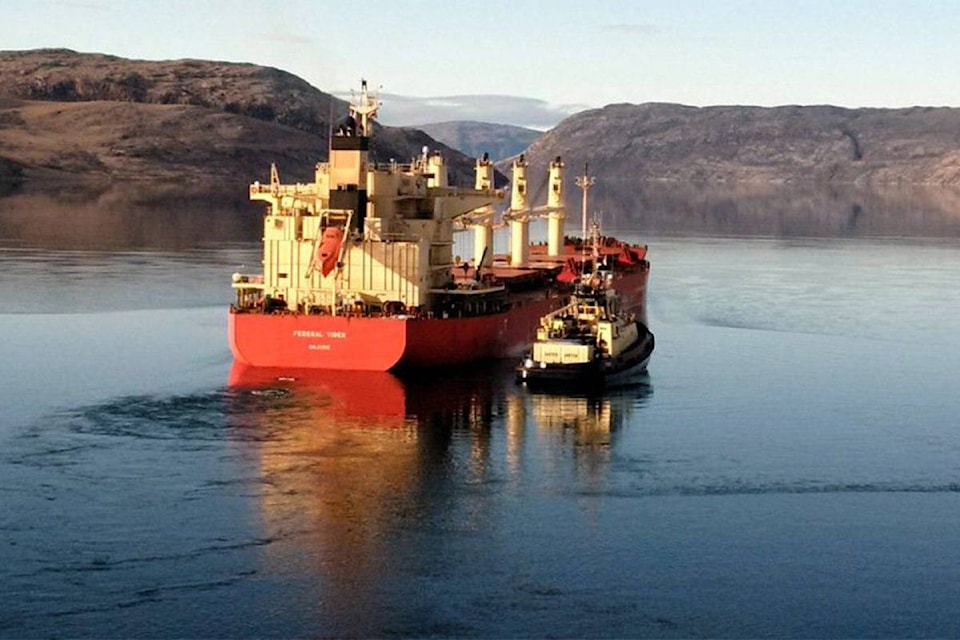Hunters from Pond Inlet are asking Baffinland Iron Mines Corp. not to do any icebreaking this year near the northern tip of Baffin Island, saying that mounting evidence shows that icebreaking is harmful to the health of narwhal.
The number of narwhal in Eclipse Sound — a body of water near the port that Baffinland uses for shipping iron ore — is affected by the company’s operations and was nearly cut in half between 2019 and 2020, dropping to 5,019 from 9,931, according to the findings of Golder Associates Ltd., Baffinland’s third-party experts on marine life.
Eric Ootoovak, chairperson of the Mittimatalik Hunters and Trappers Organization, said the decrease is due to the Mary River mine operations. Baffinland ships six million tonnes of iron ore a year from its operations there.
“Science is finally catching up with Inuit Qaujimajatuqangit [traditional knowledge] by recognizing the disturbance to narwhal,” Ootoovak stated in a June 25 news release.
“It’s time for Baffinland to take serious action to stop this disturbance, including cancelling its planned icebreaking.”
The hunters’ group also cited a study that found the stress level in narwhals is increasing and affecting their health, which many Inuit groups say is making the narwhals skinnier and less nourishing.
The Mittimatalik Hunters and Trappers Organization is opposed to Baffinland’s expansion proposal to double its annual ore shipments and build a railway and dock at Milne Inlet.
The proposal is currently before the Nunavut Impact Review Board, which had to suspend its hearing on the project when there was a COVID-19 outbreak in Iqaluit in mid-April.
Baffinland spokesperson Heather Smiles said the company agrees that there are fewer narwhal, but this could be due to factors other than the mine’s operations, such as an increase in killer whales and underwater pile driving in Pond Inlet.
“These factors may have acted independently or cumulatively,” she said. “All of these factors were either unique in 2020 or more prominent than in 2019.”
The company hasn’t decided whether it will send icebreakers this year, Smiles said. But she said a “precautionary approach” will be taken because of the low number of narwhal last year.
Baffinland has adopted “conservative” measures that are a product of feedback from Inuit groups, Smiles said.
She pointed to the company’s marine wildlife management plan, which includes two adaptive management measures that could be used: changing the ships’ schedule to avoid times when contact with narwhal is more likely to happen, and find alternative routes.
But Ootoovak said in a June 25 letter to Baffinland and the review board that the mitigation measures are unclear.
Baffinland can begin icebreaking around July 15, depending on ice conditions, and end around Oct. 15, Smiles said.
— David Venn, Local Journalism Initiative Reporter, Nunatsiaq News
